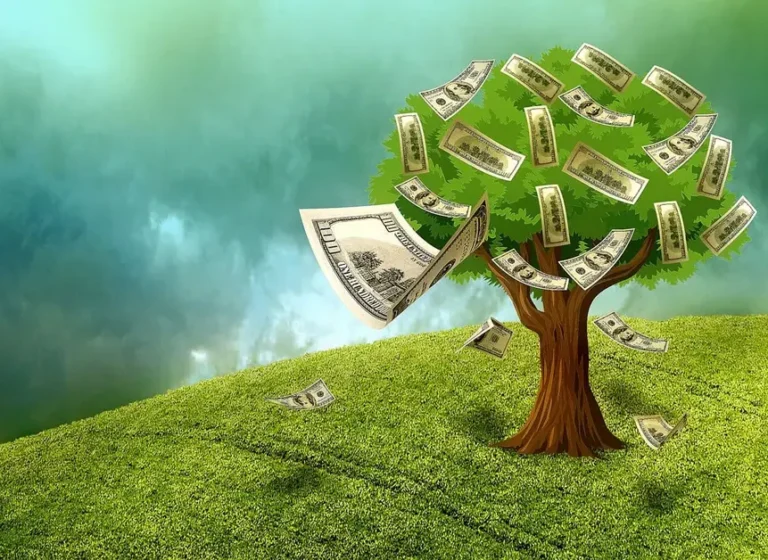The major sectors of the Economy of Jammu and Kashmir are Agriculture, Horticulture, Service Sector, Tourism, and Hydropower projects.
In this article, we will discuss all the major and minor sectors of the J&K economy.
Economy of J&K
Here is a table summarizing the main contributors to Jammu and Kashmir’s economy and their percentage of GDP:
| Sector | Percentage of GDP |
| Agriculture | 20% |
| Horticulture | 7% |
| Tourism | 8% |
| Handicrafts | 2.5% |
| Industrial Sector | 26% |
| Services Sector | 36.5% |
Agriculture
Agriculture is the most important sector of Jammu and Kashmir’s economy, accounting for approximately 20% of the state’s Gross Domestic Product (GDP) and providing employment to over 70% of the state’s population.
The state produces a variety of crops, including rice, wheat, maize, pulses, fruits, and vegetables.
Horticulture is a significant contributor to the state’s agricultural output, with the state producing a large variety of fruits, including apples, apricots, cherries, peaches, and pears.
Horticulture
Horticulture is an important sub-sector of agriculture in Jammu and Kashmir, contributing around 7% to the state’s GDP.
The state is a leading producer of apples in India, accounting for over 70% of the country’s total apple production.
Other fruits produced in the state include apricots, cherries, peaches, pears, and walnuts.
The state also produces a significant amount of saffron, which is among the most expensive spices in the world.
Saffron is an important cash crop in Jammu and Kashmir, particularly in the districts of Pampore, Budgam, and Srinagar.
The state accounts for around 12% of the world’s saffron production, and saffron cultivation is a major source of income for farmers in the region.
According to the Jammu and Kashmir government, saffron cultivation covers an area of around 5,707 hectares in the state, and the annual production of saffron is estimated at around 16 metric tonnes.
The saffron industry provides employment to around 50,000 people, including farmers, traders, and laborers.
Tourism
Tourism is a significant contributor to Jammu and Kashmir’s economy, accounting for approximately 8% of the state’s GDP.
The state has numerous pilgrimage sites, such as the Vaishno Devi temple, Amarnath cave, and the Charar-e-Sharif shrine, which attract millions of visitors every year.
The state is also home to several popular tourist destinations, including Srinagar, Gulmarg, Pahalgam, and Ladakh.
The tourism industry provides employment to a large number of people in the state, including hotel staff, guides, and taxi drivers.
Handicrafts
Handicrafts and other industries, including handloom, carpet weaving, and silk production, are important sources of employment and income in Jammu and Kashmir.
The state has a rich tradition of handicrafts, including wood carving, papier mache, shawl making, and embroidery.
These industries provide employment to a large number of people, particularly in rural areas.
Industrial Sector
The industrial sector in Jammu and Kashmir is relatively underdeveloped, accounting for only around 26% of the state’s GDP.
However, the state has significant potential for industrial growth and development, particularly in the areas of food processing, textiles, and agro-based industries.
The state has several industrial estates and parks, including the Jammu Industrial Complex, Bari Brahmana Industrial Estate, and Lassipora Industrial Estate, which offer opportunities for investment and development.
Service Sector
The service sector is an emerging sector in Jammu and Kashmir, accounting for around 36% of the state’s GDP.
The sector includes a range of services, including banking, insurance, healthcare, education, and information technology.
The state government has launched several initiatives to promote the growth of the service sector, including the establishment of IT parks and the provision of incentives for investment.
Hydroelectric Power
Jammu and Kashmir has significant hydroelectric power potential, which can contribute significantly to the state’s economy.
The state has a total hydropower potential of around 20,000 MW, out of which only around 3,000 MW has been harnessed so far.
The state government has launched several initiatives to promote the development of hydropower, including the setting up of the Jammu and Kashmir State Power Development Corporation (JKSPDC) and the identification of potential sites for hydropower projects.
Also Read: History of J&K
Conclusion
Jammu and Kashmir’s economy has significant potential for growth and development in several sectors, including agriculture, horticulture, tourism, and industry.
The state government has launched several initiatives to promote the growth of these sectors and attract investment.
FAQ’s
-
What are the main sectors contributing to Jammu and Kashmir’s economy?
The main sectors contributing to Jammu and Kashmir’s economy are agriculture, horticulture, tourism, handicrafts, the industrial sector, and the services sector.
-
What is the percentage contribution of the services sector to Jammu and Kashmir’s GDP?
The services sector contributes around 36.5% to Jammu and Kashmir’s GDP.
-
What is the major source of hydropower in Jammu and Kashmir?
The major source of hydropower in Jammu and Kashmir is the Jhelum river.
-
What is the main challenge facing Jammu and Kashmir’s economy?
The security situation in the region is the main challenge facing Jammu and Kashmir’s economy.
-
What is the percentage contribution of agriculture to Jammu and Kashmir’s GDP?
Agriculture contributes around 20% to Jammu and Kashmir’s GDP.
-
Which district in Jammu and Kashmir is known for saffron cultivation?
Pampore is known for saffron cultivation in Jammu and Kashmir.
-
What is the estimated number of people employed in the saffron industry in Jammu and Kashmir?
Around 50,000 people are estimated to be employed in the saffron industry in Jammu and Kashmir.
-
What is the annual production of saffron in Jammu and Kashmir?
The annual production of saffron in Jammu and Kashmir is around 16 metric tonnes.




